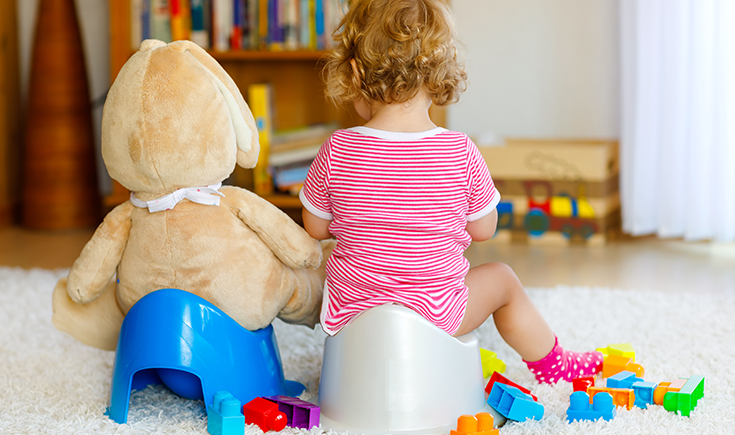

Toilet learning and toilet training are two very different approaches. Whichever you decide on will depend on what suits you, your child, and your lifestyle. We hope the following comparisons will help to inform your decision when the time comes.
Who leads the way?
- Toilet training is adult-directed with the attitude that they must ‘train’ their child.
- Toilet learning is child-led in which they’re involved in their own learning.
How long does it take?
- Toilet training may involve a time pressure on your child (you may have heard of those ‘toilet train your toddler in 3 days’ programs).
- Toilet learning is at your child’s own pace without any external pressure. It may take several months.
When is the best time to start?
- Toilet training starts usually when the adult decides is the right time, or with the goal of having the child ‘trained’ by a certain age.
- Toilet learning starts when the child shows readiness signs.
What about rewards/bribes/punishments?
- Toilet training uses an external reward system, including food, stickers, toys, and charts.
- Toilet learning acknowledges that it is a skill that is learned by the child, and learning that on their own is reward enough.
What language is used?
- Toilet training uses words such as ‘accidents’.
- Toilet learning is linked to the child’s self esteem, so there are only lessons, not ‘accidents’. Genuine praise is important.
Want to learn more about toilet learning?
Toilet learning is a process that requires a positive attitude from us. We need to commit to it, and accept that it comes with lots of washing, and wet and soiled flooring. What we don’t want is our children to see our frustration or impatience when it’s taking a lot longer than we expected.
Just like learning to walk and talk, there are steps that children slowly build on. We need to acknowledge that there’s a lot to this learning, and if a child senses our agenda or negative attitude, it can have a negative impact on the process.
The most important thing we can do is trust in our child that they will learn in their own time. Every child is different and toilet ready at a different age.
The Montessori approach to toilet learning starts at birth with cloth nappies, and then children transition to cloth underpants when they start walking. This allows them to feel moisture, and learn to recognise the wet sensation as a result of urinating.
While the child is young, they are often put on the potty when they wake in the morning and from naps, before and after meals, and before bed; all just part of their daily routine without any pressure. This helps them to become familiar and comfortable with the toilet or potty, and they can practice getting off and on it.
Ultimately, it should be a positive, fun, and relaxed experience. Follow and respect your child’s development, and they will learn in their own time.
For more detailed information, you might like to read these articles before you get started:
10 toddler toilet learning essentials
Toilet learning: a practical guide























